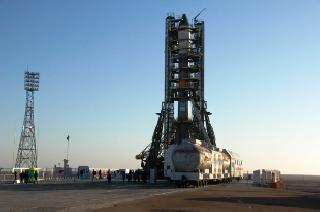
Northrop Grumman's T-3 test bed aircraft demonstrates the electro-optical/infrared (EO/IR) capability of the MS-177 camera using a Joint Surveillance Target Attack Radar System (Joint STARS). A Northrop Grumman photo.
MELBOURNE, FLORIDA (BNS): With the goal of reducing the sensor-to-shooter timeline to just minutes and expanding airborne ground surveillance command and control, Northrop Grumman has completed the installation and testing of a multispectral intelligence sensor housed in a new keel beam accessory bay (KAB) on a modified E-8C Joint Surveillance Target Attack Radar System (Joint STARS) aircraft.
"Once it is delivered, our combat commanders and joint forces will have a powerful new capability to track identified targets throughout the battle space and free up other sensors to support operational needs," said Mike Mos, director of Joint STARS' architectures and concept demonstrations for Northrop Grumman Aerospace Systems.
The installation and test examined the use of the MS-177 camera, a 500-pound multispectral intelligence sensor on the all-weather Joint STARS weapons system.
According to Northrop, the goal was to see how the sensor enhances combat identification in support of Joint STARS' continued role as a valued battle manager providing eyes in the sky for boots on the ground.
While in test flights off the coast of Florida, Joint STARS operators tasked the MS-177 sensor to collect information and streamed it into the battle management system already in place—producing very strong results, a company statement said.
Joint STARS operators were able to simultaneously exploit ground moving target indication (GMTI) and high-resolution imagery which expanded situational awareness. Images were also transmitted to off-board SIPRNET elements using its beyond-line-of-sight (BLOS) satellite communications system capabilities.
"From long distances, the APY-7 radar combined with the MS-177 camera could identify very clearly people, buildings, automobiles and ships," said Mos. "Coupling the electro-optical/infrared [EO/IR] capability of the MS-177 camera with the GMTI capability makes the system an even stronger force multiplier."
"Flight tests on the Joint STARS test bed aircraft proved the KAB, located directly behind the APY-7 radar, can support an additional large sensor, or multiple small sensors with no impact to the system's current battle management command and control and intelligence, surveillance and reconnaissance capability," Mos said.
"Next, the team will perform more aerodynamic modeling and testing with the new fairing, and we'll continue our innovative research to see how other sensor combinations integrated into the Joint STARS weapons system could provide additional capability to combat commanders. Once the United States Air Force has completed its military utility assessment, we'll look to see how we can begin to integrate the KAB and more sensors onto the entire fleet."
 Previous Article
Previous Article Next Article
Next Article








The Indian Air Force, in its flight trials evaluation report submitted before the Defence Ministry l..
view articleAn insight into the Medium Multi-Role Combat Aircraft competition...
view articleSky enthusiasts can now spot the International Space Station (ISS) commanded by Indian-American astr..
view article